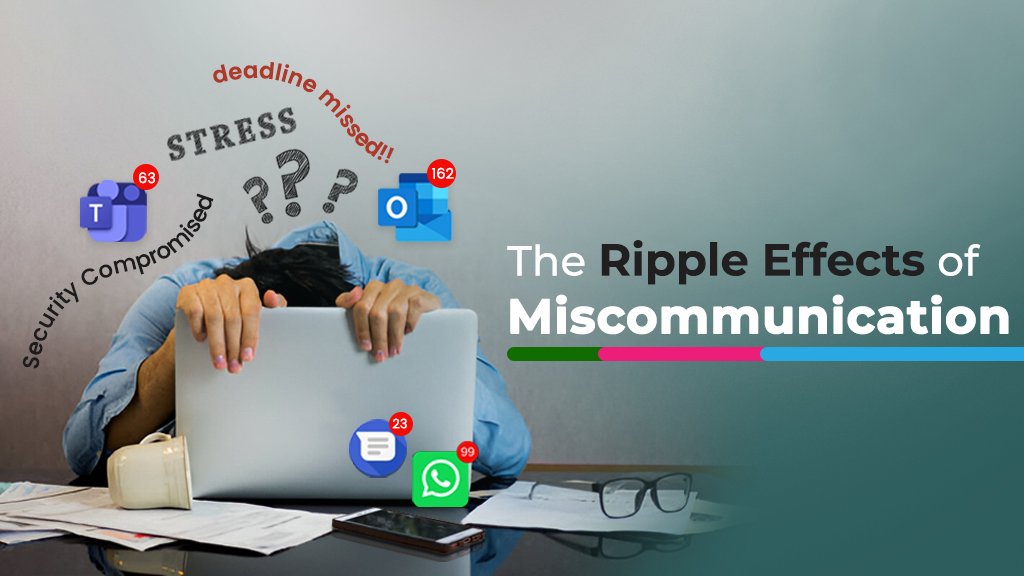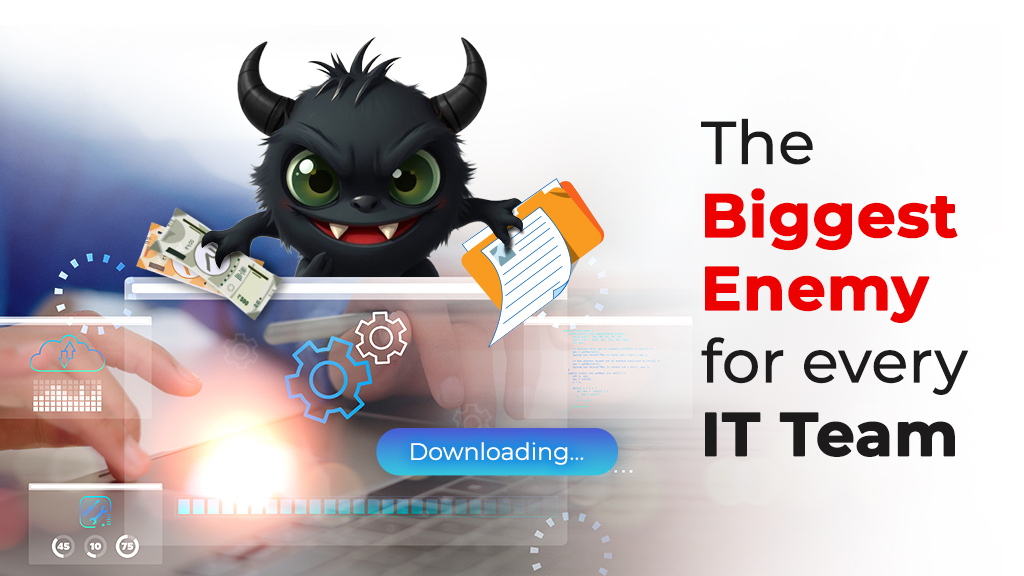The next morning, Suresh felt the familiar weight of frustration as he logged into yet another team meeting. Apex BuildCo’s communication chaos wasn’t just causing delays; it was unraveling the team’s teamwork and collaboration. Anita, his boss, looked as weary as he felt.
“Suresh,” she began, exasperated, “I need you to explain why the project’s budget details were shared in the wrong group chat. Do you realize how much confusion that caused with procurement?”
Suresh swallowed hard. “It was a mistake,” he admitted. “There are so many groups, and…” He trailed off, knowing it sounded like an excuse. The reality was that collaboration in the workplace had turned into a full-time job.
Endless Notifications
In the past week, Suresh started to realize just how much time he and his team were spending dealing with notifications from business collaboration tools. His phone buzzed incessantly with messages from WhatsApp, emails, app alerts, and even SMS updates. By the end of the day, the constant noise left him feeling exhausted and struggling to prioritize what truly mattered.
Important updates were overlooked in the deluge of messages, leading to delays in project timelines. Teamwork and collaboration were shattered every time they had to change focus, resulting in costly mistakes and repeated tasks. Productivity was slipping away like sand through their fingers.
The Security Risks of Convenience
Later that evening, a more serious issue emerged. A junior team member had accidentally shared a sensitive supplier contract in the wrong WhatsApp group. The document contained confidential pricing information, and its accidental exposure could threaten their negotiations.
Anita was furious. “This is exactly why I’ve been saying WhatsApp isn’t suitable for work,” she said, slamming her pen on the desk. “It’s insecure and unregulated. If this ends up in the wrong hands, we’re looking at a major financial and reputational risk.”
She was right. Business collaboration tools like WhatsApp might be convenient, but they lack the encryption and access controls needed to protect sensitive company data. Apex BuildCo’s scattered communication methods were not just inefficient; they were a potential liability that could cost thousands in legal fees.
Employee Burnout
By Friday, Suresh’s exhaustion was evident. The constant stress was taking a toll on his mental health, and he wasn’t alone. His team was equally drained, their enthusiasm replaced by frustration and burnout.
Anita, too, felt the strain. As a leader, she found herself overwhelmed with operational issues instead of concentrating on strategy. His team’s disjointed collaboration in the workplace was not only hindering their productivity; it was also damaging trust and morale. Mistakes were increasing, tempers were rising, and deadlines were slipping further away.
Exploring Other Options
During a strategy meeting, Anita suggested using Microsoft Teams to improve communication. “It’s a robust platform,” she mentioned. “We can centralize chats, file sharing, and video calls all in one place. It’s the structured solution we need.”
Suresh hesitated. While Teams had an impressive range of features, the costs were daunting for a company the size of Apex BuildCo. “It’s not just about the expense,” he replied. “Many of our blue-collar workers aren’t tech-savvy. They struggle with overly complicated interfaces. We need something simpler and more user-friendly; something they can easily adapt to.”
Anita nodded thoughtfully. She realized that while Microsoft Teams might work for corporate teams, it wasn’t a one-size-fits-all solution. Apex BuildCo needed a business collaboration tool that could bridge the gap between its diverse workforce, ensuring accessibility and easy teamwork and collaboration without breaking the bank.
Searching for a Way Forward
As Suresh sat at his desk that evening, he couldn’t shake the feeling that the team was caught in a never-ending cycle. Each week brought the same issues, and each week, the solutions felt only temporary.
During their next meeting, Anita addressed the elephant in the room. “We need a solution that consolidates our communication, simplifies our workflows, and protects our data,” she said. “Something that’s affordable, secure, and designed for teams like ours.”
Her words hung in the air, a spark of hope amid the frustration. Suresh realized she was right. The team didn’t just need another tool- they needed a system that worked for them, not against them.
The question was, where would they find it?
Stay tuned for the next article, where we explore how NexAEI Colab is changing the course of collaboration in the workplace and offering a lifeline to teams like Suresh’s.
For a personalized discussion, feel free to contact us at neha.b@nexaei.com.







